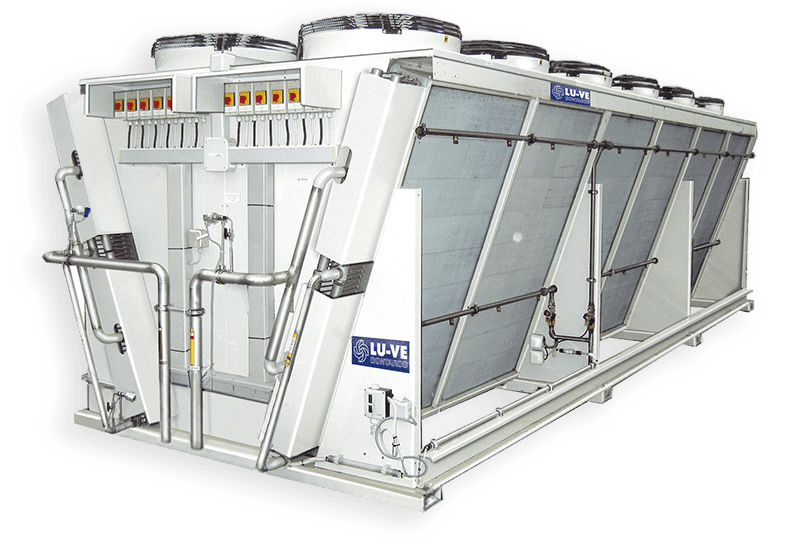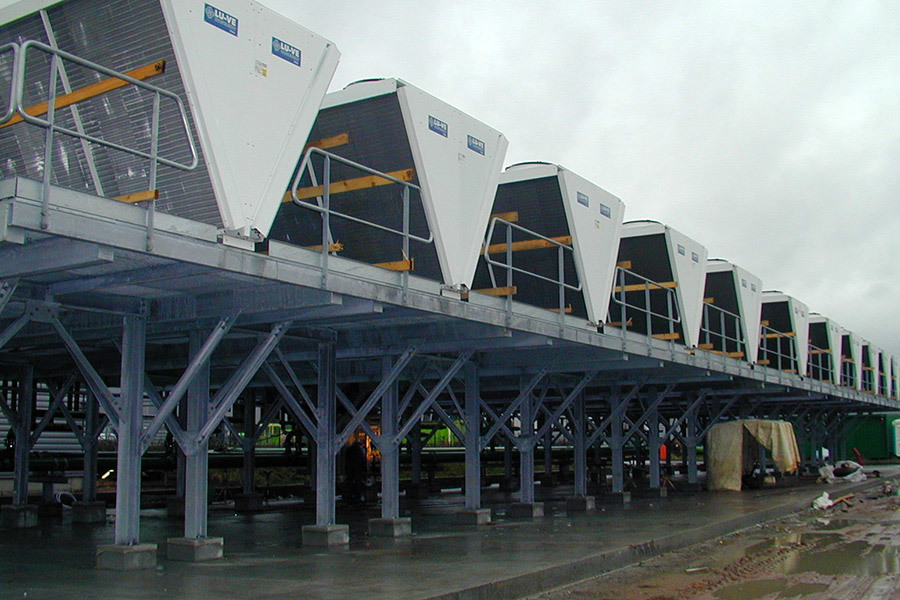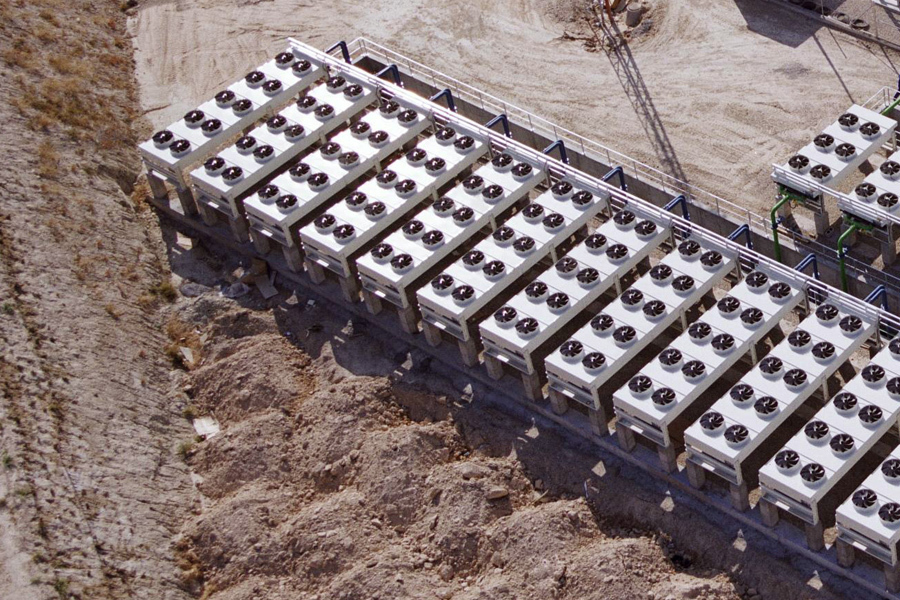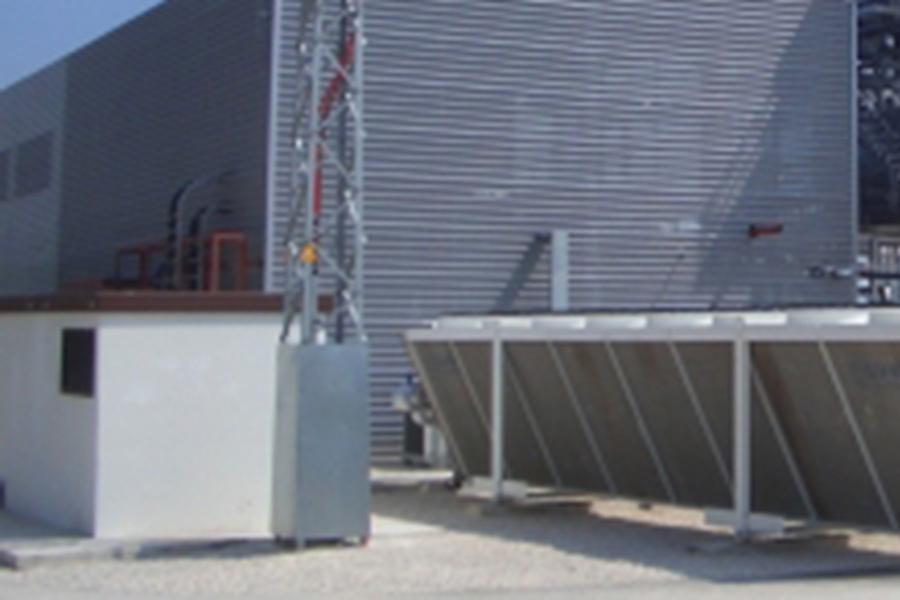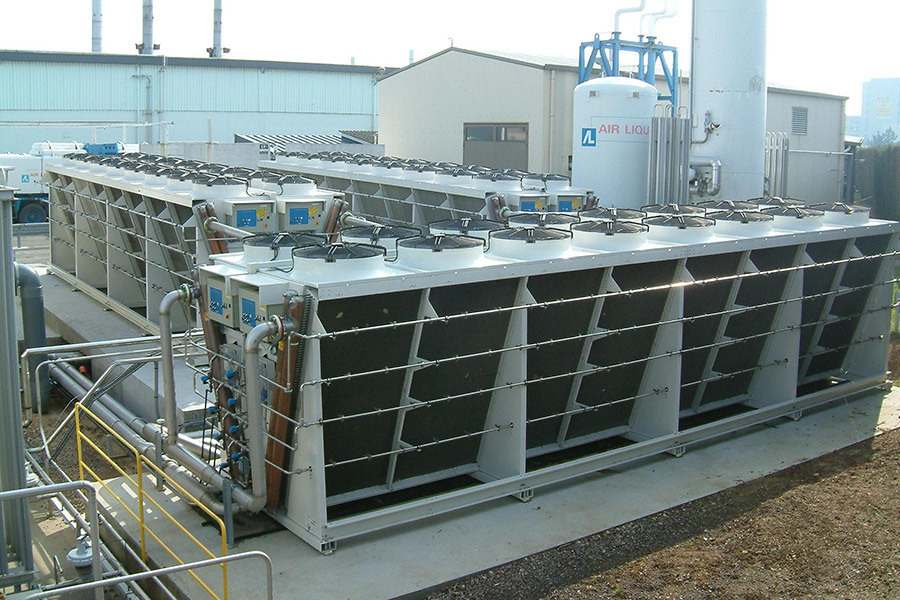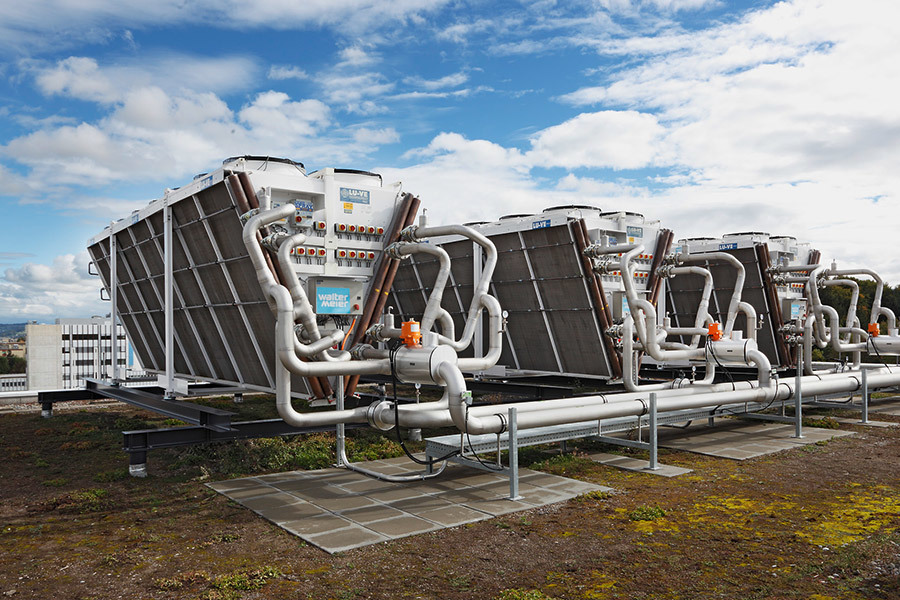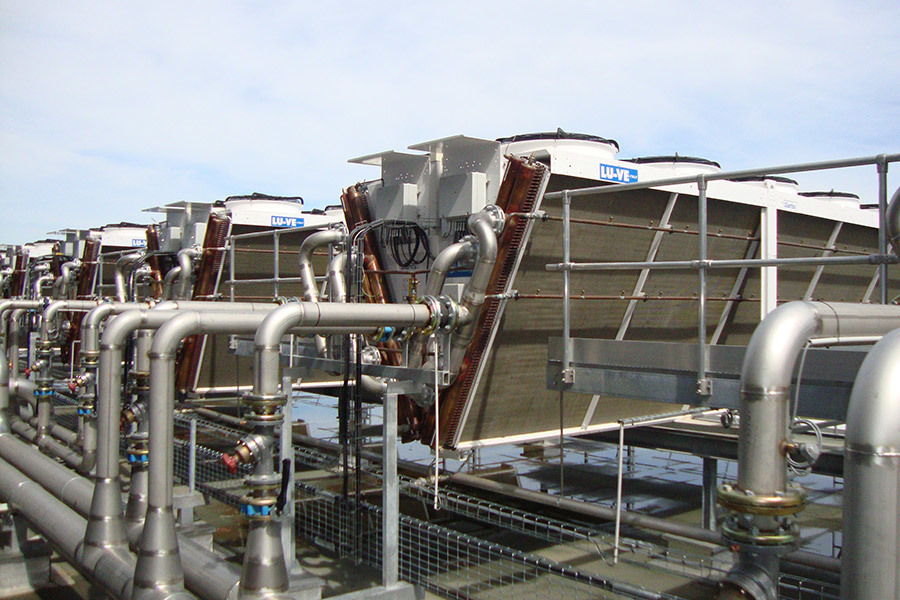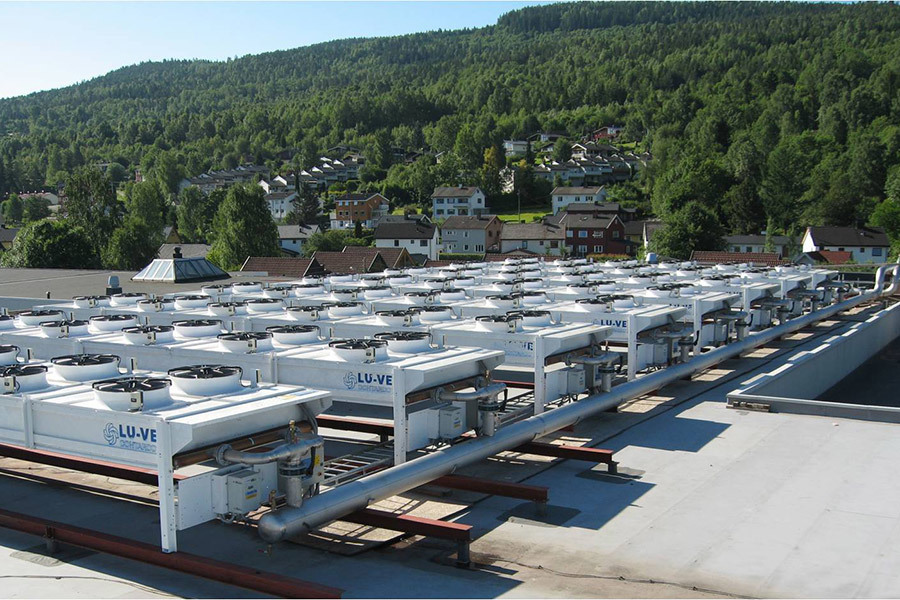Special CO2 (Carbon Dioxide) gas coolers and evaporators
Differences from traditional HFCs
CO2 is radically different from traditional HFCs (R404A, R507 etc) and can cause particular difficulties to heat exchanger designers;moreover, the appropriate choice of heat exchanger technology is fundamental to the successful construction of high-efficiency CO2 installations.
For these reasons a specific project, carried out by LU-VE, the Politecnico di Milano and several important customers, led to the definition of the ideal exchanger configuration, capable of exploiting to the utmost the special characteristics of this refrigerant and of obtaining interesting benefits.
The LU-VE product line
In recent years LU-VE has developed a specific line for CO2 evaporators and for the revolutionary gas cooler, which in transcritical CO2 plants substitutes the traditional condenser.
- Cubic commercial unit coolers.
- Dual discharge commercial unit coolers.
- Angled commercial unit coolers.
- Cubic industrial evaporators.
- Dual discharge industrial unit coolers.
- Single- and double-V coil gas coolers.
Today LU-VE can reasonably claim to be foremost in this field for both the high-tech solutions adopted and also for the high number of plants installed.
